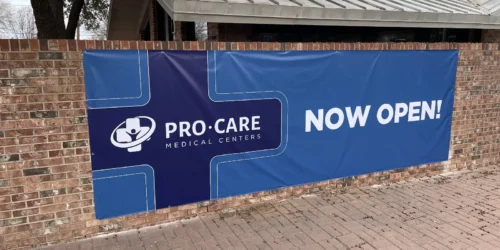We’ve talked about the car accident statistics in Texas before, but what about occupational injuries like those in construction? These can cause serious injuries and there are some startling figures when it comes to Texas construction injuries. Thankfully, rates have been declining over the past several years, but it’s important to be aware of common scenarios to best avoid injury yourself.
Why is Construction so Common in Texas?
If you live in a major Texas city, chances are that you’ve seen construction on at least one major project continuously since around 2021 (looking at you, I-35). The state has been experiencing a massive boom in population growth, particularly in areas like Austin, San Antonio, and DFW. In Q2 2024, construction alone contributed $137 billion to the state’s economy (over 5% of the state’s total GDP). Annual employment growth has also continued for more than 40 consecutive months since April 2021. All of this has been driven by the influx of people moving to Texas, which requires more homes, apartment buildings, offices, stores, and infrastructure.
Texas Construction Injury Statistics
Before looking specifically at construction, let’s start with some overall occupational injury patterns. The most up-to-date report on official Texas occupational injury statistics we have is for 2023, which thankfully saw a slight decrease in total fatal injuries from 2022 (564 vs. 578). While not as low as 2020 due to COVID (469 fatal injuries), this is quite a bit lower than pre-COVID levels (608 fatal injuries in 2019 in Texas).
Of the 564 total fatal occupational injuries in Texas, 126 were in the construction industry:
- This is a slight decrease from 2022 (vs. 140 fatal construction injuries)
- 48 of these were construction laborers, with the remainder making up other occupations like material movers
In 2023, Texas private industry employers reported 175,900 nonfatal workplace injuries and illnesses:
- This is the lowest rate of injury and illness in Texas workplaces in the last decade
- 9,400 of these 175,900 injuries were in the construction industry, down from 10,400 in 2022
- About 3,400 cases of the total 9,400 construction injuries were serious enough to require time away from work
- There were about 1,000 total injuries attributed to building construction (about 200 for residential buildings, about 800 for nonresidential buildings)
- An estimated 1,800 were attributed to heavy and civil engineering construction (about 800 of which was from utility system construction and about 1,000 from highway/street/bridge construction)
- The largest group of construction injuries came from building equipment contractors (3,600), which was split between electrical and wiring installation contractors and plumbing, heating, and air conditioning contractors
- Construction injury rates were highest for organizations between 50 and 249 workers
- Very small (1-10 workers) and very large (1,000+ workers) organizations had the lowest injury rates in construction
The rate per 100 full-time workers in the construction industry was 1.2, which has been steadily decreasing since 2019 (1.5)
- 2021 saw a spike in the injury rate for the construction industry, jumping to 1.9 before going back down to 1.3 in 2022
Most Common Construction Injuries
There are several different scenarios or causes that result in the vast majority of these construction injuries. The “big four” hazards are falling, being struck by something, being caught between something, and electrocution. Let’s discuss each of these (plus a few other notable causes) to minimize the risk of them happening to you:
Slips & Falls
Whether due to uneven surfaces, slippery floors, or other causes, workers losing balance and falling often account for the largest proportion of construction injuries. Construction frequently involves elevated workspaces like scaffolding and ladders — combine this with slippery surfaces or poor fall protection equipment and the potential for injury becomes very high. Even minor falls can cause back pain and neck stiffness, with more serious cases sometimes resulting in broken bones.
Struck-By
These injury types occur when someone is hit by an object (either falling, flying, or swinging), usually tools or material like beams and pipes. Struck-by cases are common because of the prevalence of moving parts and swinging arms on heavy machinery. This is amplified when high-traffic zones have poor visibility or unsecured tools and materials that could fall on someone below. Minor injuries might include bruises, while more severe struck-by accidents could break bones or concussions and traumatic brain injuries.
Caught-Between
The most common cause of crush injuries, caught-between accidents happen when someone is pinned between multiple objects or surfaces (like machinery and a wall). Although they mostly occur in tight working spaces, any heavy objects that can move have the potential to cause these, especially those with blind spots. Crush injuries can break bones, cause spinal cord damage, and even damage nerves by putting excessive pressure on them.
Electrocution
The last of the “big four,” electrocution typically happens to electricians and wiring installers. While it’s most common if someone touches a live wire, electrocution can also occur with faulty equipment or energized circuits. As structures are being built, there are often exposed wires and temporary power systems like portable generators around. This increases the risk of someone being electrocuted, which can cause serious nerve damage or burns to the skin.
Burns
Burns are particularly nasty injuries from hot surfaces, steam, or fire. Those who work around welding, soldering, or flammable materials are particularly at risk. The damage from burns can be extremely severe, affecting both the surface-level skin and deeper muscle tissue and nerves. Serious burns often require immediate attention at a hospital or ER.
Chemical Exposure
This can result in similar damage to burns, but can also cause internal damage from accidental inhalation or ingestion. If chemicals like solvents and cleaning agents aren’t used with proper ventilation, they can wreak havoc on your lungs and brain. If dangerous chemicals are accidentally spilled, this can also injure workers in the area. This would generally result in internal or nerve damage, depending on the chemical and exposure method.
Vehicle Accidents
Either in the driver’s seat or on the ground, you could be hurt by a collision or rollover. Construction site vehicle accidents are less common than on-road accidents, but can still cause serious injuries to both workers and pedestrians. While on-road accidents often occur because of ignored signage, construction vehicle accidents typically happen when there is a lack of warning signs or pedestrian pathways. Like caught-between injuries, vehicle accidents can cause broken bones, nerve damage, back injuries, and more.
Construction Injury Symptoms
As a result of the injuries discussed above, there can be different types of damage caused to the body. Know what symptoms to look for so treatment can begin sooner. Some of the most common include:
- Traumatic Brain Injuries: TBIs include concussions, but also more serious symptoms like persistent headaches, slurred speech, mood swings, cognitive impairment, and even seizures after a head injury (like from a struck-by accident). Recovery will vary depending on the severity of the trauma, but typically involves lots of rest and a slow return to work.
- Broken Bones: These can be caused by falls, caught-between, and struck-by injuries, resulting in severe pain and swelling at the injury site. Treatment usually immobilizes the area with a cast or splint, followed by physical therapy to regain strength and mobility.
- Nerve Damage: Being pinned in a caught-between injury can cause nerve damage, as can electrocution and burns. This may result in weakness and difficulty moving the affected area, or pins and needles sensations. The cause will determine the recovery method, which could include medication, neuromuscular therapy, or surgery for extreme cases.
- Neck, Shoulder, & Back Injuries: Usually affecting the muscles in these areas, physical impact injuries (falls, struck-by, caught-between) are often the cause of this kind of pain or stiffness. Ice and heat therapy, anti-inflammatory medication, and physical therapy are the most common treatments for a fast recovery.
- Spinal Cord Damage: Falls and caught-between accidents can lead to spinal cord damage as well, which might cause loss of function below the injury site, loss of sensation, and sometimes loss of bladder control.
Occupational Injuries Require Fast & Effective Recovery
If you’ve been injured in Texas and need comprehensive care to get back to feeling like yourself, Pro-Care Injury Centers can help. Whether it’s a sore back, head injury, or nerve damage, our team of doctors will tailor a recovery plan to your specific needs. Pro-Care doctors are experienced in a variety of fields from chiropractic care and pain management to orthopedics and neurology. Book an appointment online or call your closest location to get on the road to recovery today!



